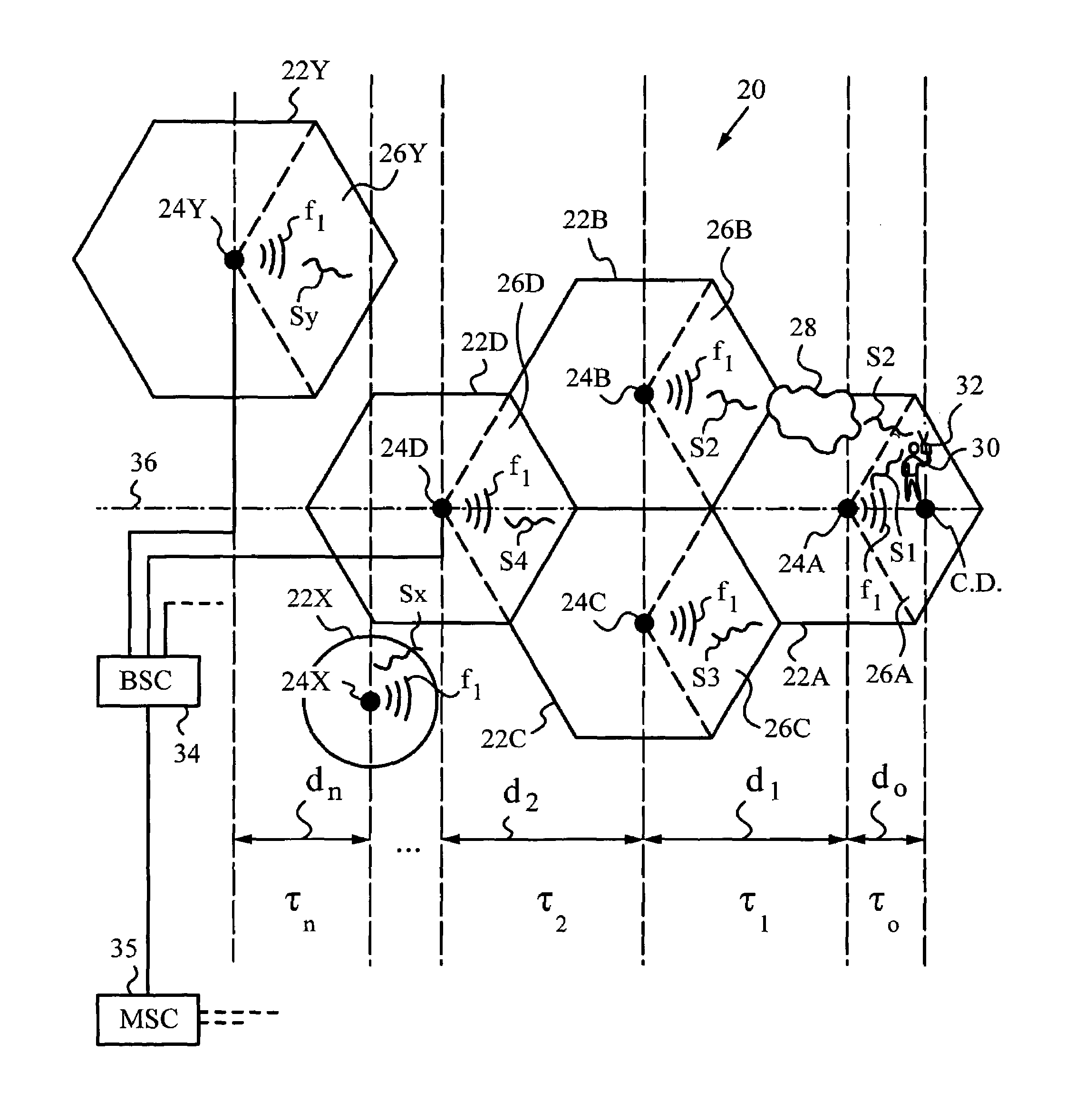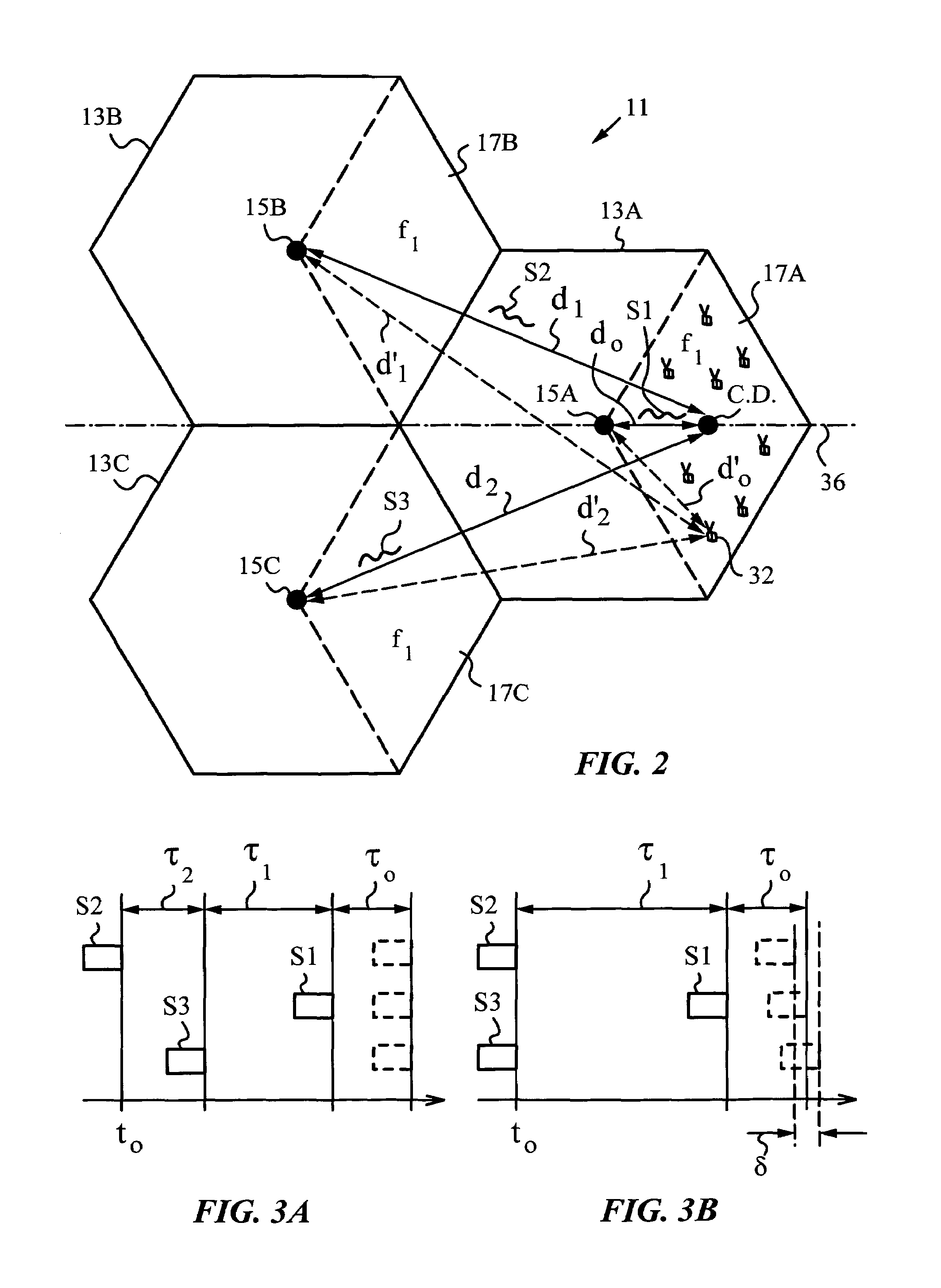Method and wireless communications systems using coordinated transmission and training for interference mitigation
a wireless communication system and wireless communication technology, applied in the field of wireless communication systems, can solve problems such as signal corruption, interference from other cellular users, and inaccessibility of frequency spectrum, and achieve the effects of reducing the effects of co-channel interference, reducing the frequency re-use of cellular wireless systems, and sufficient level of cci suppression
- Summary
- Abstract
- Description
- Claims
- Application Information
AI Technical Summary
Benefits of technology
Problems solved by technology
Method used
Image
Examples
Embodiment Construction
and the preferred and alternative embodiments is presented below in reference to the attached drawing figures.
BRIEF DESCRIPTION OF THE FIGURES
[0035]FIG. 1A (Prior Art) is a diagram showing a typical cluster of cells.
[0036]FIG. 1B (Prior Art) is a diagram of a wireless system composed of cell clusters as shown in FIG. 1A.
[0037]FIG. 2 is a diagram illustrating signal delay times in a number of cells.
[0038]FIGS. 3A&B are timing diagrams indicating appropriate transmission times in the cells of FIG. 2.
[0039]FIG. 4 is a diagram illustrating a generalized wireless system utilizing the method of the invention.
[0040]FIG. 5A is a timing diagram illustrating the signal transmission delays used for coherent reception at the distribution center.
[0041]FIG. 5B is a timing diagram illustrating an acceptable delay in receiving the signals at a mobile receiver.
[0042]FIG. 6 is a diagram of a wireless system utilizing the method of the invention to increase frequency re-use.
[0043]FIG. 7 is a block dia...
PUM
 Login to View More
Login to View More Abstract
Description
Claims
Application Information
 Login to View More
Login to View More - R&D
- Intellectual Property
- Life Sciences
- Materials
- Tech Scout
- Unparalleled Data Quality
- Higher Quality Content
- 60% Fewer Hallucinations
Browse by: Latest US Patents, China's latest patents, Technical Efficacy Thesaurus, Application Domain, Technology Topic, Popular Technical Reports.
© 2025 PatSnap. All rights reserved.Legal|Privacy policy|Modern Slavery Act Transparency Statement|Sitemap|About US| Contact US: help@patsnap.com



